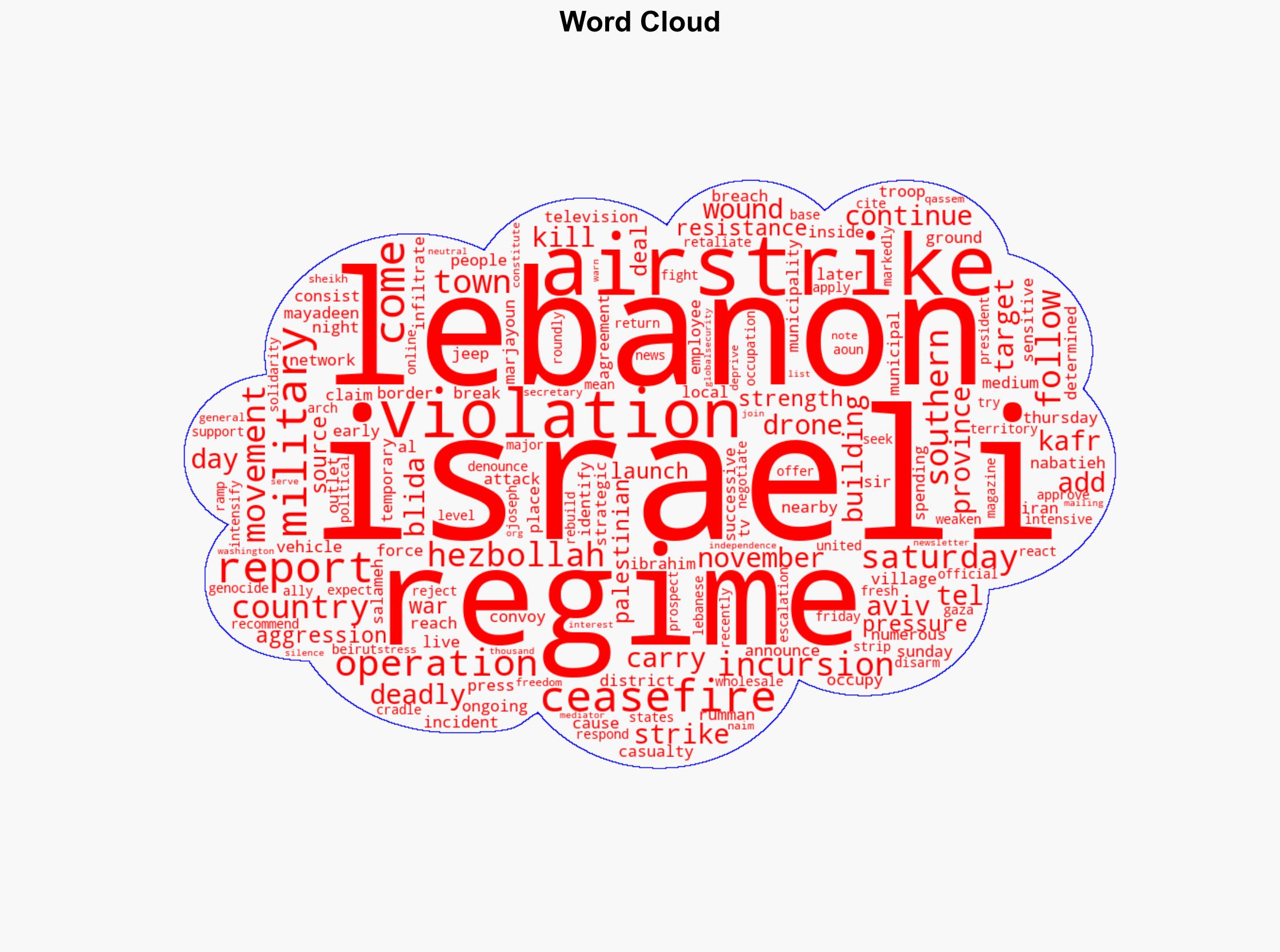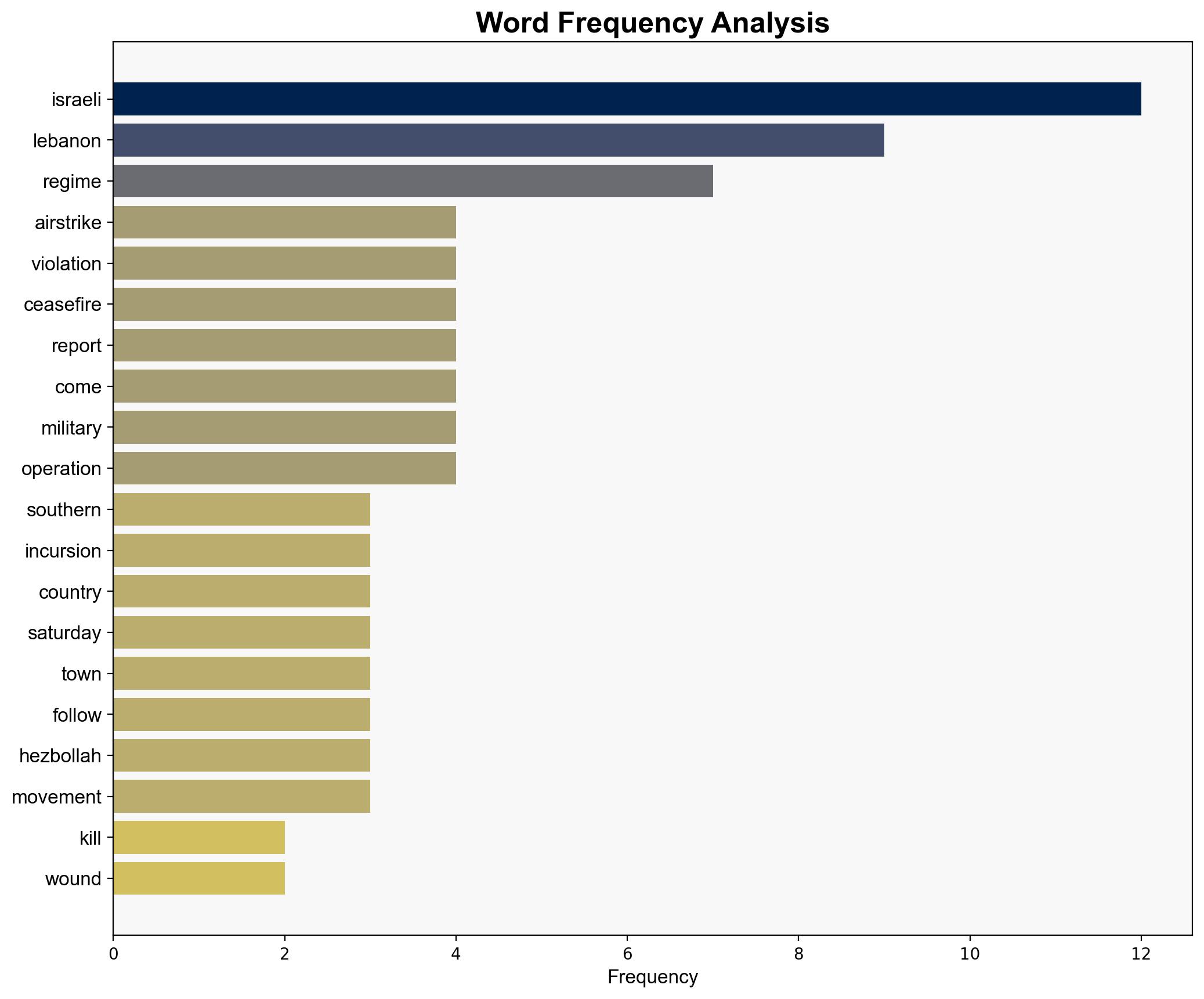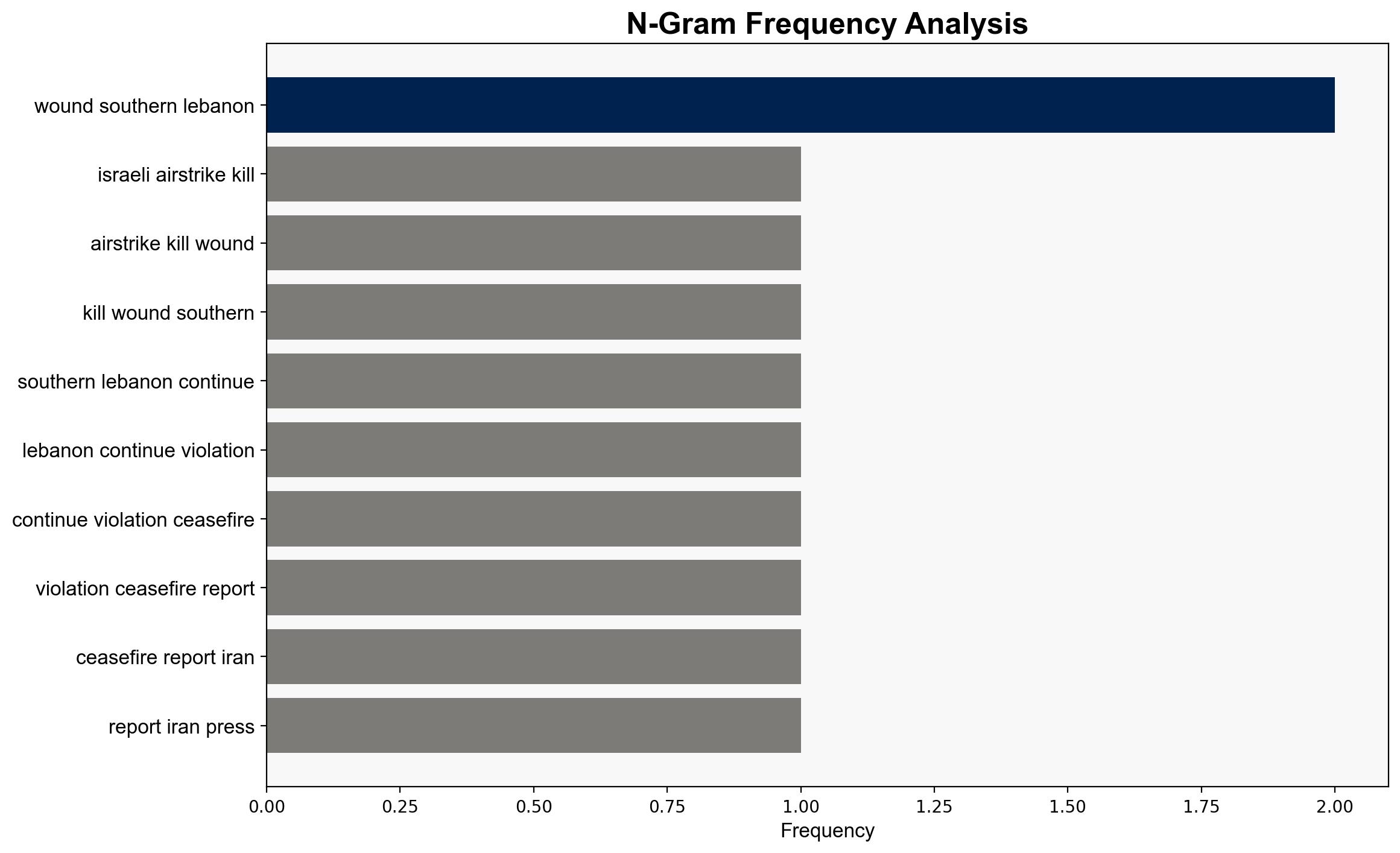Israeli airstrike kills 4 wounds 3 in southern Lebanon in continued violation of ceasefire Report – Globalsecurity.org
Published on: 2025-11-03
Intelligence Report: Israeli airstrike kills 4 wounds 3 in southern Lebanon in continued violation of ceasefire Report – Globalsecurity.org
1. BLUF (Bottom Line Up Front)
The most supported hypothesis is that the Israeli airstrike is a strategic move to weaken Hezbollah’s military capabilities and deter future attacks. Confidence level: Moderate. Recommended action: Increase diplomatic engagement to de-escalate tensions and reinforce ceasefire agreements.
2. Competing Hypotheses
Hypothesis 1: The Israeli airstrike is a deliberate strategy to weaken Hezbollah’s military infrastructure in southern Lebanon, aiming to prevent future attacks and maintain regional security.
Hypothesis 2: The airstrike is a reactionary measure to recent provocations by Hezbollah, intended as a deterrent against further aggression but not part of a broader strategic campaign.
3. Key Assumptions and Red Flags
– **Assumptions for Hypothesis 1:** Israel perceives Hezbollah as a significant threat requiring preemptive action. The airstrike is part of a calculated military strategy.
– **Assumptions for Hypothesis 2:** The airstrike is a direct response to specific provocations, not indicative of a larger strategic plan.
– **Red Flags:** Lack of detailed intelligence on the specific targets and motivations behind the airstrike. Potential bias in source reporting, particularly from outlets with known political alignments.
4. Implications and Strategic Risks
– **Escalation Risk:** Continued airstrikes could lead to a broader conflict involving regional actors, increasing instability.
– **Geopolitical Impact:** Strained relations between Israel and Lebanon could affect broader Middle Eastern alliances and U.S. interests in the region.
– **Psychological Dimension:** Heightened tensions may lead to increased radicalization and recruitment by extremist groups.
5. Recommendations and Outlook
- Engage in diplomatic efforts to reinforce the ceasefire and prevent further military escalations.
- Monitor regional military movements and communications for signs of escalation.
- Scenario Projections:
- Best Case: Successful diplomatic intervention leads to a renewed ceasefire agreement.
- Worst Case: Escalation into a broader conflict involving multiple regional actors.
- Most Likely: Continued sporadic violence with intermittent diplomatic efforts to stabilize the situation.
6. Key Individuals and Entities
– Ibrahim Salameh: Identified as a casualty in the airstrike.
– Sheikh Naim Qassem: Secretary General of Hezbollah, advocating for resistance against Israeli actions.
7. Thematic Tags
national security threats, regional focus, Middle East conflict, military strategy, ceasefire violations





